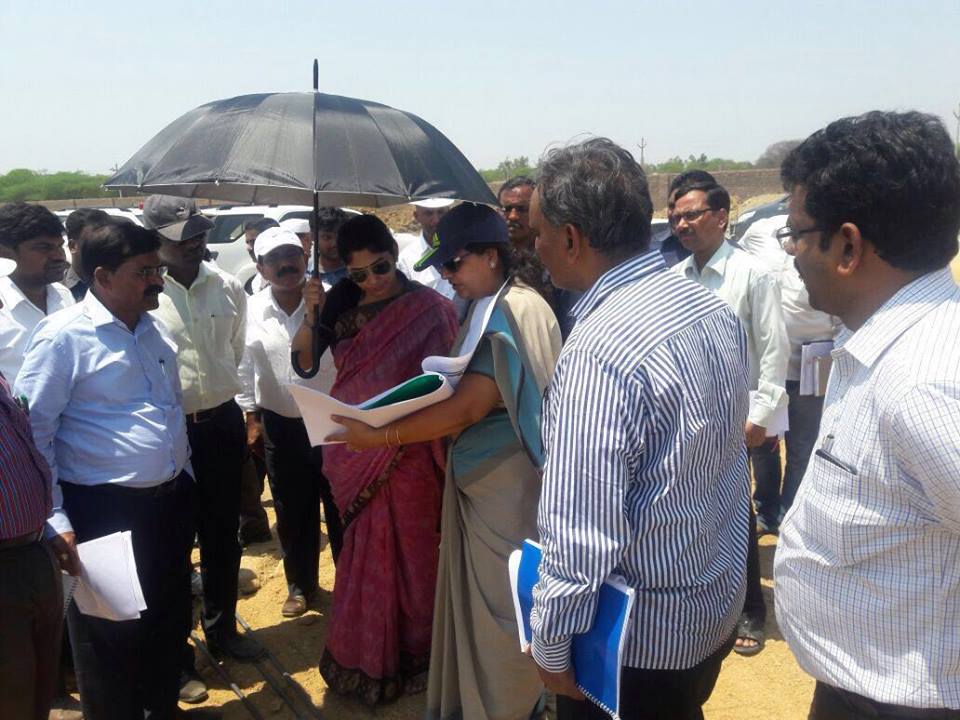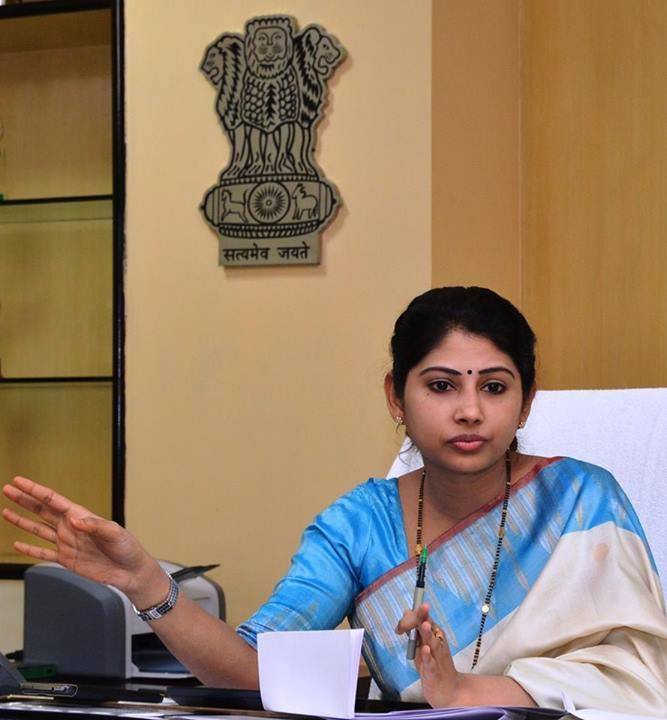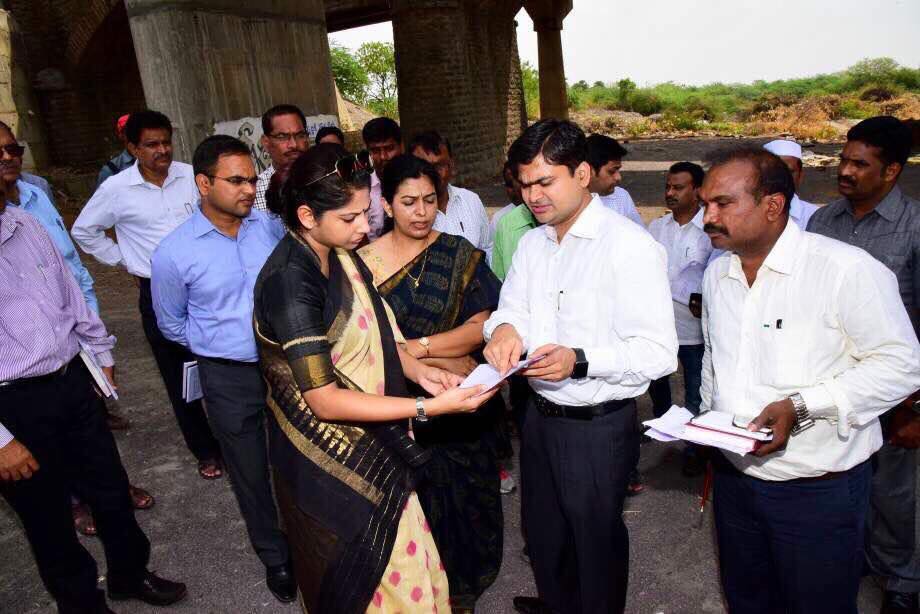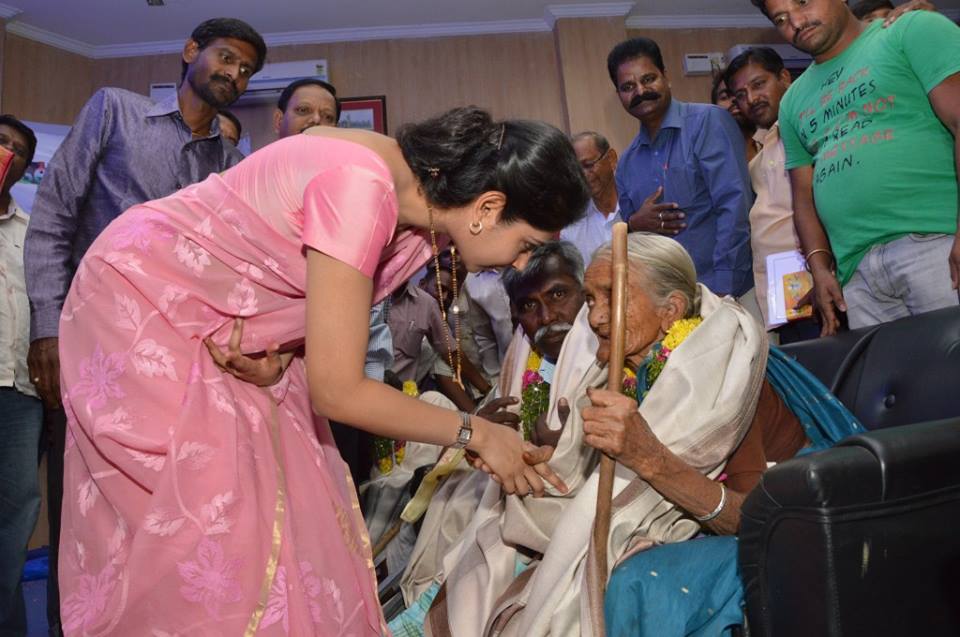A People’s Officer: She is The Youngest IAS Officer to Be Appointed to a CM’s Office!
Smita Sabharwal may look diminutive in appearance but the young Telangana-cadre IAS officer has a tall list of notable achievements under her belt.

Smita Sabharwal may look diminutive in appearance but the no-nonsense 40-year-old has a tall list of notable achievements under her belt. A hardworking bureaucrat whose infectious passion for public service is matched by her sense of pragmatism, she is India’s youngest IAS officer to be appointed to the Chief Minister’s Office.

Born in West Bengal on June 19, 1977, Smita originally hails from Darjeeling. Her father, Colonel PK Das, was an Army officer who was periodically transferred to different places. As such, Smita grew up attending school in many parts of the country, including Secunderabad and Hyderabad.
After graduating in Commerce from Hyderabad’s St Francis Degree College for Women, Smita (an All-India topper in ICSE Standard XII) was encouraged by her parents to appear for the civil service examination.
The quiet, hardworking girl did so and cleared the exam with flying colours, securing the fourth rank in the country. The fact that she was just 22 when she did this made her one of the youngest to have cracked the fiercely competitive UPSC exams.

After completing her administrative training in Mussoorie’s Lal Bahadur Shastry National Academy of Administration, Mussoorie, the Telangana-cadre IAS ofiicer got her first probationary posting to Adilabad district.
This was followed by tenures as Sub-Collector of Chitoor, Project Director at Kadapa’s Rural Development Agency, Municipal Commissioner of Warangal, and Joint Collector of Kurnool and Hyderabad.
From engaging with the public to building infrastructure in the Maoist hit areas, Smita’s well-planned and innovative ideas soon began bringing about much-needed change. One of her most popular schemes during these stints was the “Fund Your City” initiative in Warangal, under which a larger number of public utilities (such as over-bridges, bus stops, parksetc) were built through Public-Private Partnership (PPP).
Unsurprisingly, Smita’s stellar work on these deputations earned her much appreciation and goodwill. It also ensured that she was soon promoted to the rank of District Collector of Karimnagar, one of Telangana’s backward districts.
It was this tenure during which Smita’s people-centric initiatives evidence-based policy-making and rigorous programme evaluations earned her the moniker of “People’s Officer”.

Distressed to see development work — especially in healthcare and education sector — languishing in the district, Smita immediately got to work.
On finding out that only 9% deliveries were happening at hospitals, she launched the ‘Amma Lalana‘ (translates to’mother’s nurturing’) scheme under which periodic maternal checkups were made freely available for poor women.
Smita followed this up by revamping government hospitals — sanitation and cleanliness were improved, staff requirements were filled, computers and internet facilities were installed in all hospitals and their functioning was monitored via Skype. This action was complemented by dedicated awareness campaigns to convince more women to come to hospitals for institutional deliveries.
The tech-savvy IAS officer also introduced a tailor-made software that gave a direct pointer to areas prone to anaemia, high-risk pregnancies, poor registration of antenatal and poor access to healthcare facility allowing the health department to focus on strengthening these core areas.

In the office or at home, Sabharwal began logging on to this constantly updating system several times a day. This helped her to identify the areas that needed immediate medical intervention, to receive real-time inputs from health workers and to check doctor attendance at randomly selected Primary Health Centres (PHC).
Thanks to its immense success in reducing infant and maternal mortality rate, all districts in Telangana were soon asked to implement the Karimnagar model of encouraging institutional deliveries.
“If we give good, clean facilities, people will want to come to government hospitals. That’s the motto of Amma Lalana. Childbirth should be a happy event, not a burden for extremely poor families. We improved sanitation, got good equipment and trained doctors. People responded to that positively. I am happy to say that now the entire state is adopting this model,” the articulate IAS officer told FirstPost.

Additionally, Smita introduced the concept of “dry days” – removal of all stored water and fill with fresh water – to check the breeding of mosquitoes caused by waterlogging.
Apart from being the driving force that lifted Karimnagar’s healthcare from the doldrums, she also initiated several schemes that made a substantial contribution towards the improvement of the quality and quantity of education in the district.
Smita used internet-based monitoring to log into welfare hostels and asks the kids about the food being served, the cleanliness of the campus and other enquires about their general well-being.
Apart from making these surprise online visits, she also kept checking the dashboard of a one-of-its-kind performance monitoring system of government schools to know whether weak students were being given special classes and whether there had been any improvement in their performance.

These efforts proved fruitful — within a year, Karimnagar district topped SSC pass percentage in the state, with 93.38% of its students passing the exam.
Furthermore, she introduced innovative ways to encourage and ensure voting in villages. For instance, under the “Voters Panduga” scheme introduced by her, vehicles were provided to remote villages so that its residents could make it to voting centres. Unsurprisingly, the district has one of the highest numbers of voters in that election.
Smita also launched “Praja Vaani”, a web-enabled grievance system in local language through which people could directly petition the District Collectorate every week. Contrary to the expectations of the lackadaisical district authorities, petitioners (including the sick, the aged and the diabled) arrived in hordes from all parts of the district to submit their petitions for redressal at the weekly programmes conducted by their suave young Collector.
While her administrative brilliance fetched her widespread respect in the official circles, it was her instinctive thoughtfulness that endeared her deeply to the common man. In fact, thanks to Smita’s innovative initiatives, Karimnagar was awarded the best district in Prime Minister’s 20 Point Programme for the year 2012-2013.
A number of accolades and awards also came Smita’s way during this period, which the humble bureaucrat diligently and politely turned down. For her, making a tangible positive change through her work was rewarding enough.

Soon after, in 2015, Smita broke the glass ceiling by becoming the youngest IAS to be appointed to the Chief Minister’s office as an additional secretary. However, as she set foot in her new post, she had an encounter with misogyny when Outlook magazine wrote an article about her, describing her as “eye candy”.
Not the one to take such obvious objectification lying down, Smita sued the Outlook magazine for its disparaging and sexist remarks about her. The publication later expressed its regret at the article and stated that it was not meant to be derogatory in any way.
“I feel that the world is ready for us only when we think we are ready for the world. I tell my colleagues and peers — ‘Competence and leadership have no gender’. If you are competent and focused, then no one looks at whether you are a man or a woman,” the pro-active IAS officer said.
Today, Smita Sabharwal has at least 20 fan pages and more than 5 lakh followers on Facebook, one of India’s very few officers to have such a huge fan base. Not very surprising given that she of those rare government officers who combines an innovative mind with the ability to push new ideas through a slow-moving system.
Like this story? Or have something to share? Write to us: [email protected], or connect with us on Facebook and Twitter.
NEW: Click here to get positive news on WhatsApp!
If you found our stories insightful, informative, or even just enjoyable, we invite you to consider making a voluntary payment to support the work we do at The Better India. Your contribution helps us continue producing quality content that educates, inspires, and drives positive change.
Choose one of the payment options below for your contribution-
By paying for the stories you value, you directly contribute to sustaining our efforts focused on making a difference in the world. Together, let’s ensure that impactful stories continue to be told and shared, enriching lives and communities alike.
Thank you for your support. Here are some frequently asked questions you might find helpful to know why you are contributing?


This story made me
-
97
-
121
-
89
-
167











